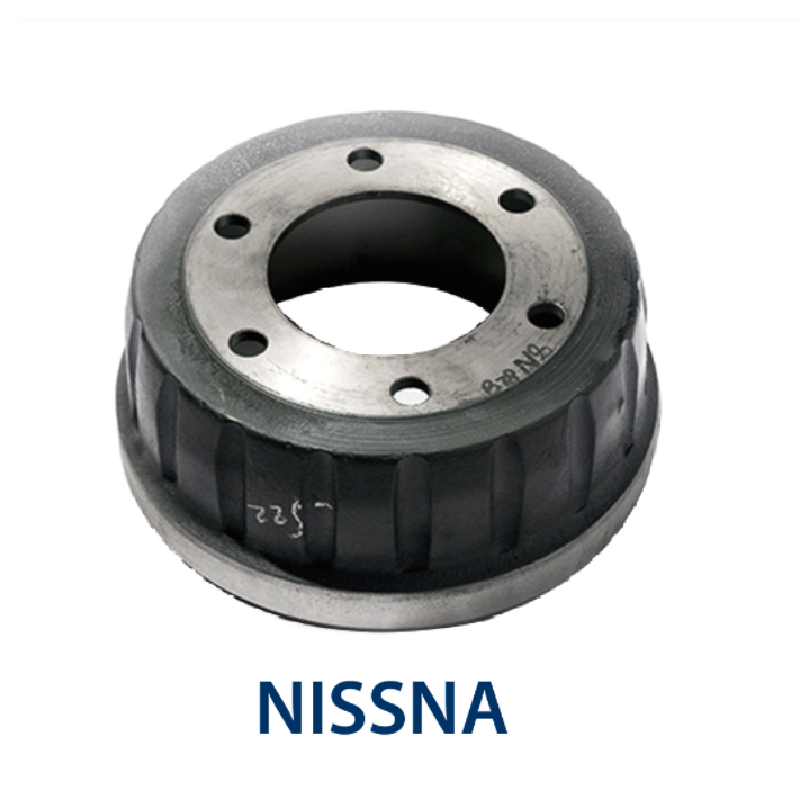Aug . 31, 2024 01:35 Back to list
brake drum design
Brake Drum Design Key Considerations for Performance and Safety
Brake drum design plays a crucial role in the overall performance and safety of vehicles. As one of the key components in the braking system, brake drums are primarily responsible for slowing down or stopping a vehicle by converting kinetic energy into thermal energy. Understanding the essential aspects of brake drum design can lead to enhancements in vehicle safety, wear resistance, and performance efficiency.
Material Selection
The choice of material is one of the primary considerations in brake drum design. Traditionally, cast iron has been the predominant material due to its excellent thermal conductivity, strength, and resistance to wear. However, with advancements in technology, alternative materials such as aluminum and composite materials are gaining popularity. Aluminum offers reduced weight, which can improve fuel efficiency and handling. Composite materials, on the other hand, provide enhanced thermal resistance and are less likely to warp under heat, making them an appealing option for high-performance vehicles.
Drum Geometry
Drum geometry significantly influences the performance of the braking system. The shape and dimensions of the drum must be designed to optimize thermal dissipation and reduce weight while maintaining structural integrity. The diameter and width of the drum affect braking force and surface area, directly impacting how effectively the brakes can perform. Moreover, incorporating features such as fins or cooling vents can help dissipate heat more efficiently, reducing the risk of brake fade during prolonged use.
Surface Treatment
brake drum design

The surface finish of the brake drum is another critical aspect of design. A smooth surface reduces friction wear on brake shoes, prolonging their lifespan and improving braking efficiency. However, some roughness is necessary to enhance friction and ensure effective braking. Surface treatments such as heat treatment, shot peening, or coatings can also improve resistance to wear and thermal expansion, expanding the drum’s operating life and reliability.
Testing and Quality Assurance
Rigorous testing and quality assurance processes are essential in brake drum design. Brake drums must be evaluated under various conditions, including extreme temperatures, loads, and speeds, to assess their performance and safety. Simulation software can be employed to predict how a drum will behave under different conditions, allowing engineers to make necessary adjustments before physical prototypes are produced. Furthermore, adherence to safety standards and regulations is non-negotiable and ensures that the manufactured drums perform reliably in real-world situations.
Innovations and Future Trends
Innovation in brake drum design continues to evolve with advancements in materials and technology. The integration of smart sensors that monitor temperature and wear can provide real-time feedback to drivers and improve maintenance scheduling. Additionally, the trend towards electric and hybrid vehicles is leading to new design considerations including regenerative braking systems that can affect drum design and functionality.
In conclusion, the design of brake drums is a multidimensional process that requires a careful balance of materials, geometry, surface treatment, and thorough testing. With a focus on enhancing performance, safety, and durability, advancements in brake drum design will contribute significantly to the evolution of vehicle technology. As automotive manufacturers strive for improved efficiency and sustainability, the importance of effective brake systems remains paramount, ensuring both driver safety and a smoother ride.
-
Your Brake Drum Man: Premium & Reliable Brake Drums for Sale
NewsAug.18,2025
-
ROR Web Development: Build Fast, Scalable, Secure Apps
NewsAug.17,2025
-
Scania Brake Drums: OEM Quality for Optimal Safety & Durability
NewsAug.16,2025
-
R.V.I: Advanced Remote Visual Inspection for Precision
NewsAug.15,2025
-
Discover HYUNDA: Innovative Vehicles, Equipment & Solutions
NewsAug.14,2025
-
R.V.I: Unlock Advanced Insights & Real-time Performance
NewsAug.13,2025
